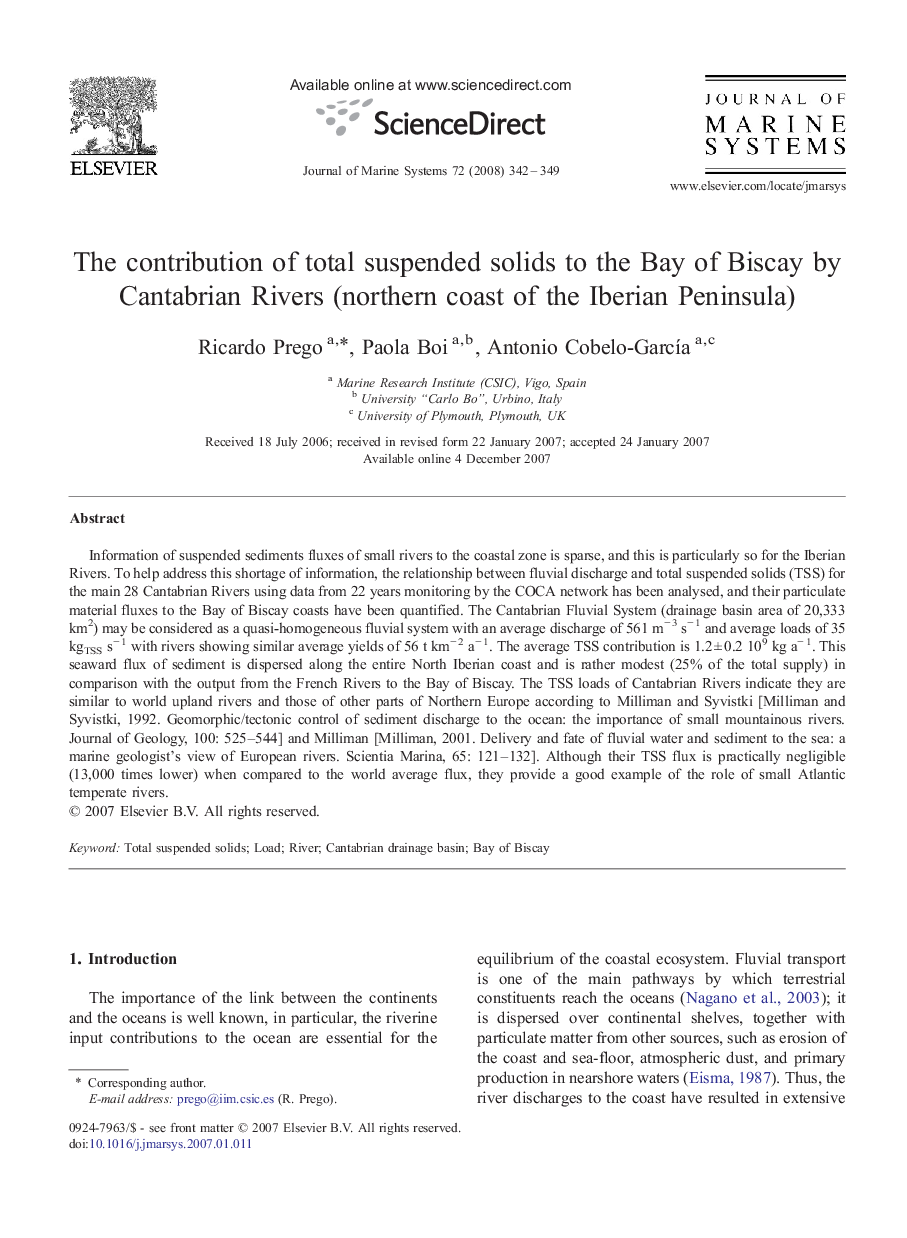| Article ID | Journal | Published Year | Pages | File Type |
|---|---|---|---|---|
| 4548848 | Journal of Marine Systems | 2008 | 8 Pages |
Abstract
Information of suspended sediments fluxes of small rivers to the coastal zone is sparse, and this is particularly so for the Iberian Rivers. To help address this shortage of information, the relationship between fluvial discharge and total suspended solids (TSS) for the main 28 Cantabrian Rivers using data from 22 years monitoring by the COCA network has been analysed, and their particulate material fluxes to the Bay of Biscay coasts have been quantified. The Cantabrian Fluvial System (drainage basin area of 20,333 km2) may be considered as a quasi-homogeneous fluvial system with an average discharge of 561 mâ 3 sâ 1 and average loads of 35 kgTSS sâ 1 with rivers showing similar average yields of 56 t kmâ 2 aâ 1. The average TSS contribution is 1.2 ± 0.2 109 kg aâ 1. This seaward flux of sediment is dispersed along the entire North Iberian coast and is rather modest (25% of the total supply) in comparison with the output from the French Rivers to the Bay of Biscay. The TSS loads of Cantabrian Rivers indicate they are similar to world upland rivers and those of other parts of Northern Europe according to Milliman and Syvistki [Milliman and Syvistki, 1992. Geomorphic/tectonic control of sediment discharge to the ocean: the importance of small mountainous rivers. Journal of Geology, 100: 525-544] and Milliman [Milliman, 2001. Delivery and fate of fluvial water and sediment to the sea: a marine geologist's view of European rivers. Scientia Marina, 65: 121-132]. Although their TSS flux is practically negligible (13,000 times lower) when compared to the world average flux, they provide a good example of the role of small Atlantic temperate rivers.
Related Topics
Physical Sciences and Engineering
Earth and Planetary Sciences
Oceanography
Authors
Ricardo Prego, Paola Boi, Antonio Cobelo-GarcÃa,
